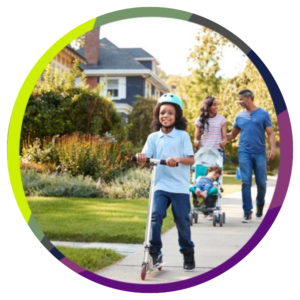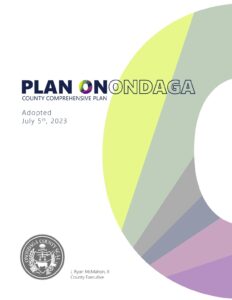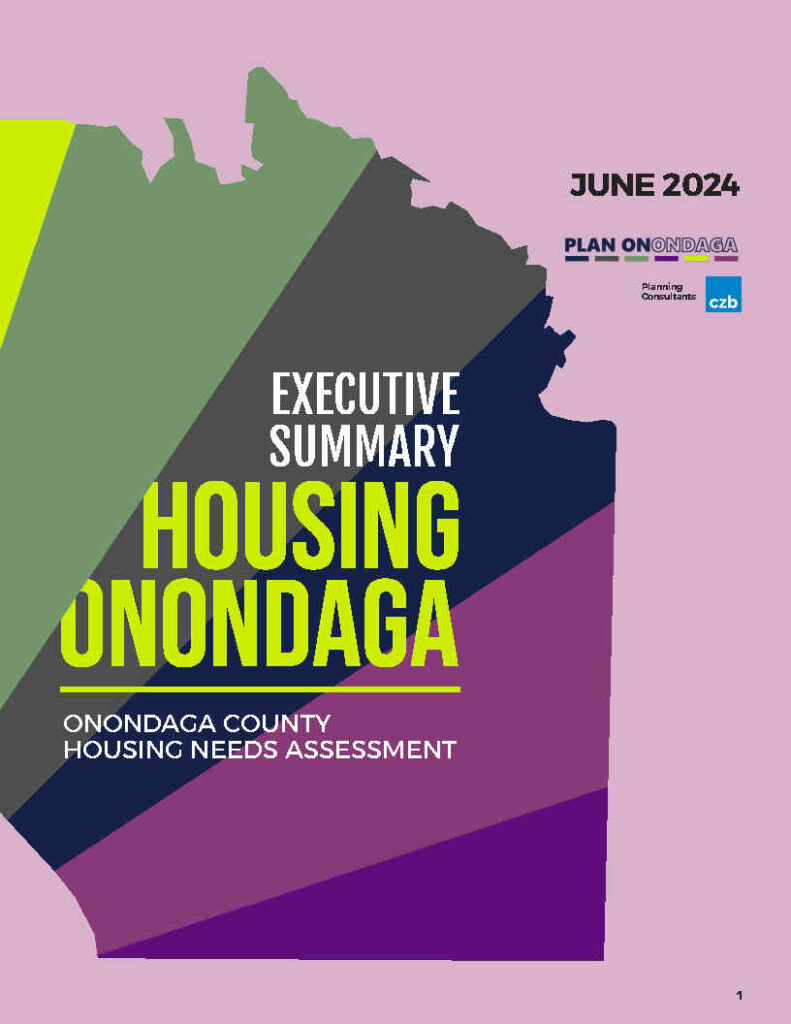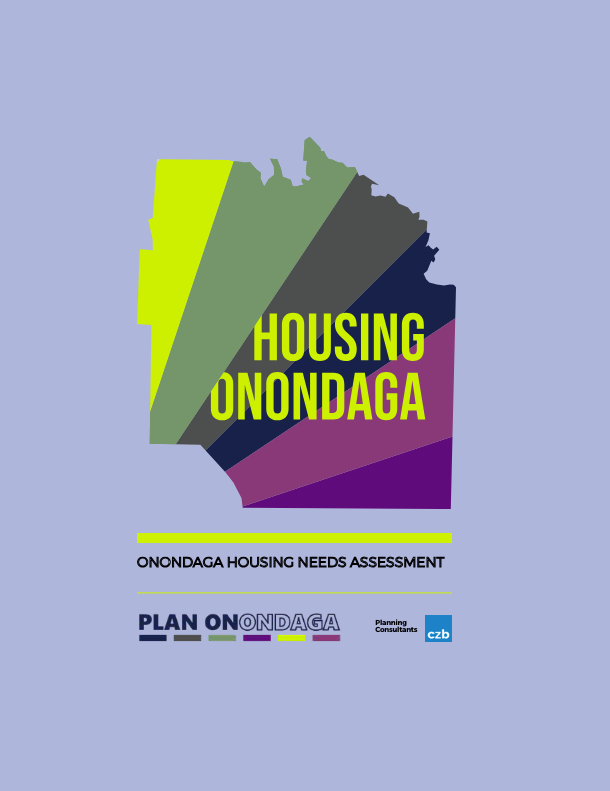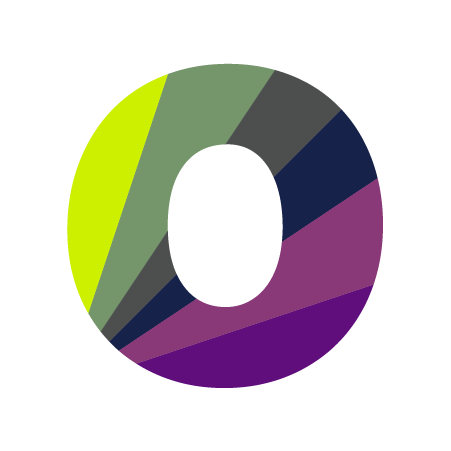Housing and Neighborhoods as a planning theme addresses the needs and desires people have for the structures and places where they live.
Vision
Onondaga County will support affordable, attractive, and efficient housing and neighborhoods to retain and attract future residents.
Why Plan For Housing + Neighborhoods?
Since the Great Recession, new home construction in the U.S. has declined significantly, resulting in the fewest housing units built in any decade since the 1960s. A national shortfall of 3.8 million units has emerged, driven largely by the sharp drop in single-family and entry-level “starter” homes. Although apartment construction has increased, it hasn’t closed the gap. To meet current and future housing demands, communities must diversify housing options through comprehensive planning and updated zoning to support a broader range of housing types.
Over a third of U.S. households are burdened by high housing costs, spending more than 30% of their income on housing. As supply has declined and construction costs have risen, wages have not kept pace, making affordable housing increasingly out of reach—even for households earning above typical subsidy thresholds. In areas with lower median incomes, like Onondaga County, the gap is even wider. This forces families to stretch budgets or endure long commutes, impacting economic stability. Beyond subsidies, improving housing affordability also requires investment in energy efficiency, as high utility costs further strain household finances.
Shifting demographics and lifestyle preferences, particularly among millennials and baby boomers, are driving demand for walkable, vibrant communities near town centers and transit. Many suburban areas have begun to urbanize in response, but the supply of diverse, affordable housing in these areas still falls short. As more older adults wish to age in place, communities must plan for a wider variety of housing options and ensure access to amenities like services, parks, and transportation to meet evolving needs.
Older homes are often located in walkable, well-designed neighborhoods with desirable features like sidewalks, mature trees, and access to community amenities. While these homes may require updates to meet modern expectations, their location often makes renovation worthwhile. Improving energy efficiency through repairs, upgraded appliances, and better insulation can significantly enhance comfort, reduce costs, and extend the value of the existing housing stock.
Components of Housing and Neighborhoods
The term “complete neighborhood” refers to a neighborhood where all residents have safe and convenient access to the goods and services needed for daily life. This includes a variety of housing options, grocery stores, shops and offices, healthcare, quality public schools, public open spaces and recreational facilities, affordable active transportation options and civic amenities. An important element of a complete neighborhood is that it is built at a walkable and bikeable human scale, and meets the needs of people of all ages and abilities.
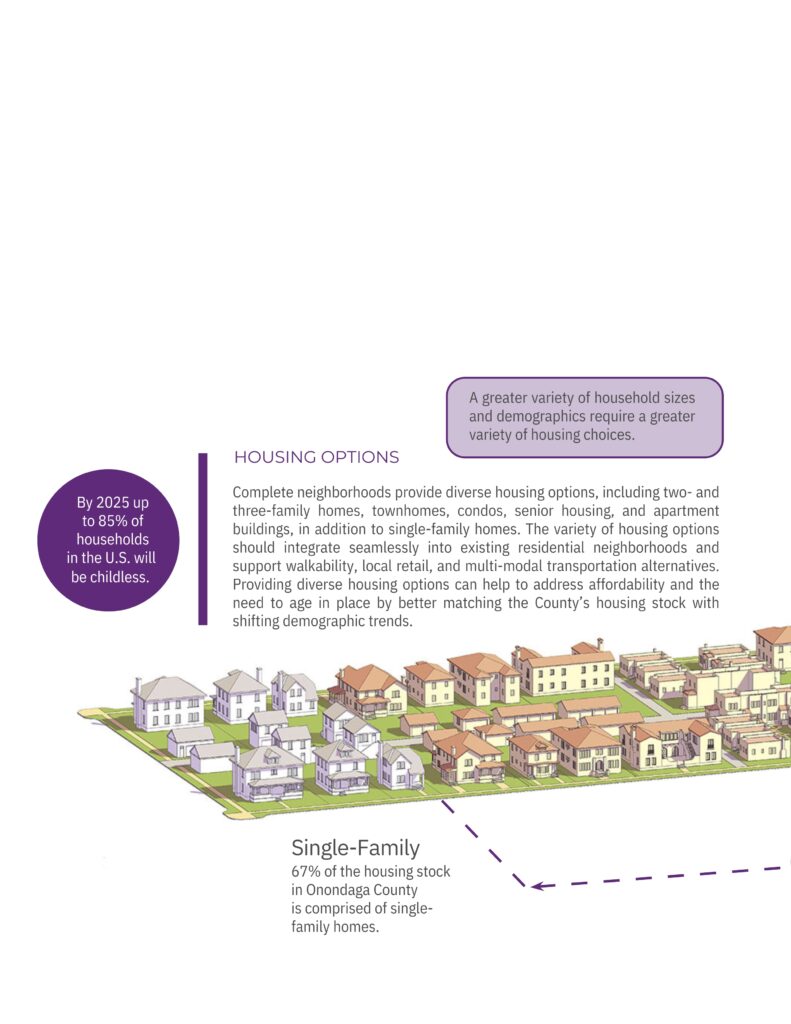

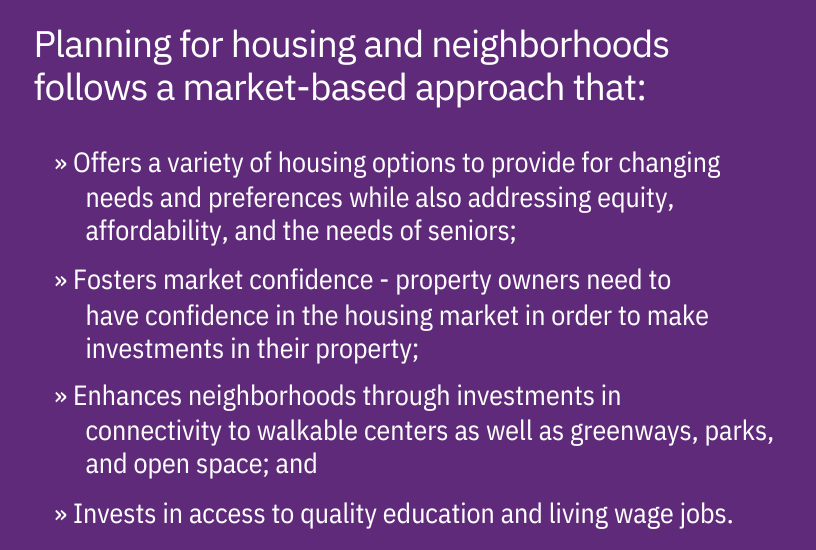
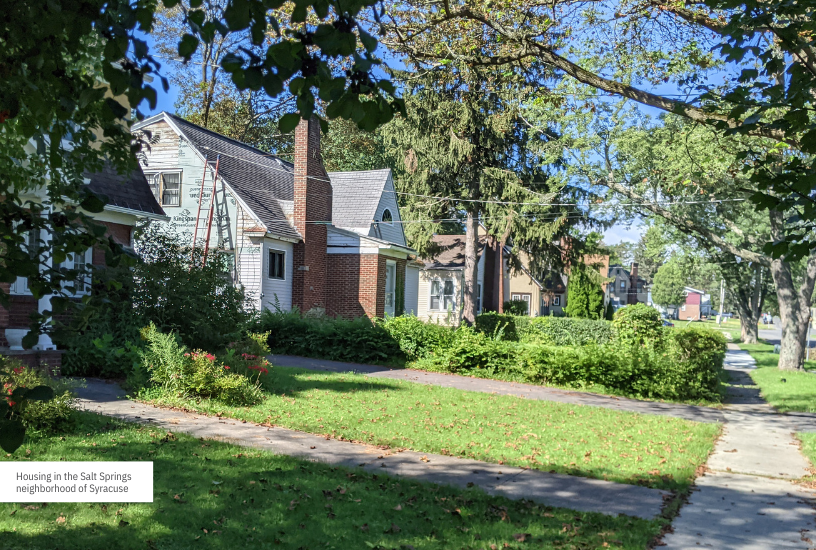
Goals and Strategies
Quality housing and good neighborhoods are key components of maintaining quality of life in Onondaga County. Maintaining and improving the County’s housing stock while investing in neighborhood amenities and assets will help strengthen the County’s competitiveness.
Strategy 1:
County partners, such as the Onondaga County Planning Federation, offer training, toolkits, and programs to help local municipalities bridge knowledge gaps and update local regulations and development review processes to allow a broader range of housing options.
Strategy 2:
Provide best practices and toolkits for integrating accessory dwelling units (AUDs) in local codes. ADUs may serve as a much more convenient and affordable alternate for individuals trying to locate housing.
Strategy 3:
Provide recommendations for reviewing and reducing local parking requirement minimums to prioritize housing individuals over cars.
Strategy 1:
Conduct a Housing Needs Assessment.
Strategy 2:
Support the efforts of the Land Bank and developers to remove and demolish dilapidated buildings that are unmarketable.
Strategy 3:
Build housing market confidence in soft and middle market neighborhoods by using available funding and programs to assist homeowners to make investments in their homes.
Strategy 4:
Strengthen connections between soft and middle market neighborhoods and job centers.
Strategy 5:
Work to address poverty, raise household incomes, increase access to living wage jobs, and education in soft and middle market neighborhoods.
Strategy 6:
Support interventions in middle and stable market neighborhoods to avoid decline and to ensure the long-term strength and appeal of housing in these neighborhoods.
Strategy 1:
Plan for, codify and demand the amenities and quality of life infrastructure to create great neighborhoods. Empower local government to demand and require these components of a neighborhood as part of the development process.
Strategy 2:
Continue existing and develop new Community Development programs that support the maintenance of the County’s aging housing stock (e.g., energy efficiency, renewable energy technologies, and conveniences).
Strategy 3:
Invest in parks, trails, and open space resources that enhance quality of life, strengthen property values and offer opportunities to connect housing and neighborhood areas with the County’s greenway and blueway systems.
Strategy 4:
Identify neighborhoods that would benefit from neighborhood retrofits, where the County can assist the local government and homeowners in a selected area to incorporate missing “complete neighborhood” features like sidewalks, trail connections, street lights, traffic calming features and street trees to increase the attractiveness and value in the neighborhood.
Strategy 5:
In areas near schools, help local communities plan for and utilize Safe Routes to School funding to install neighborhood features that assist students walking or biking to school, and also improve the neighborhood overall for everyone else.
Strategy 6:
Continue to support and utilize Main Street and other housing programs administered by the County Community Development department.


